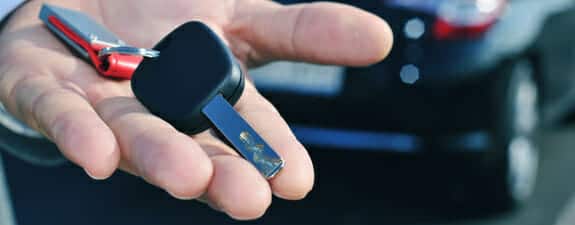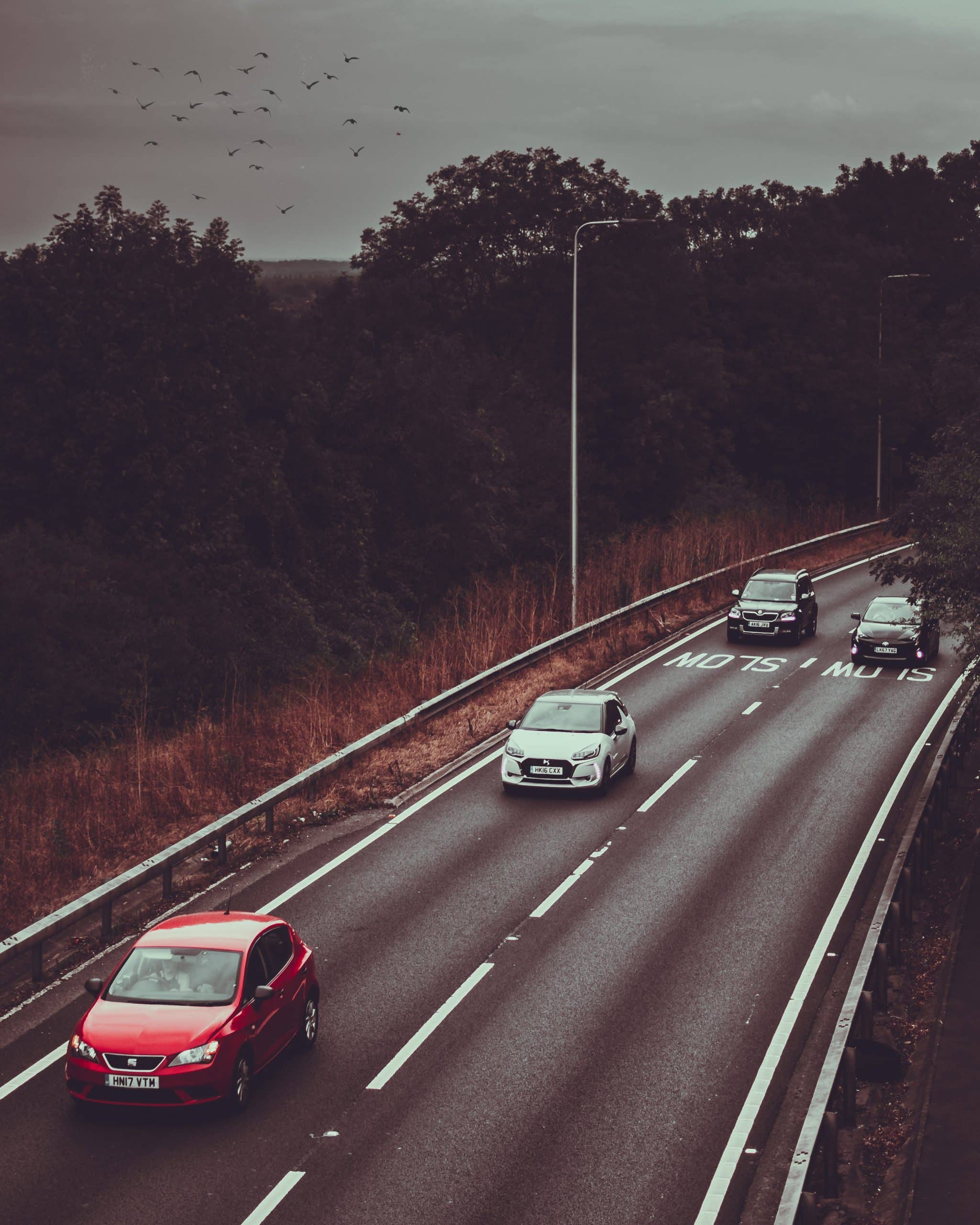
What is the legal definition of drink driving?
According to UK law, drink driving is defined as driving, attempting to drive, or being in charge of a vehicle while over the legal alcohol limit. The legal alcohol limit for drivers in England, Wales, and Northern Ireland is 80 milligrammes of alcohol per 100 millilitres of blood (80mg/100ml), while in Scotland, the limit is lower at 50 milligrammes of alcohol per 100 millilitres of blood (50mg/100ml).
Under UK law, the following actions or behaviours constitute drink driving:
- Driving or attempting to drive a vehicle while over the legal alcohol limit.
- Being in charge of a vehicle while over the legal alcohol limit.
- Refusing to provide a specimen of breath, blood, or urine for analysis.
- Causing death by careless driving when under the influence of drink.
It is important to note that there is no failsafe way to determine how much alcohol will put an individual over the legal limit, or to convert the blood alcohol concentration (BAC) limit into the number of units one can consume. The concentration of alcohol in the blood depends on various factors such as weight, age, gender, and the amount of food consumed before drinking.
In addition to alcohol, it is also illegal to drive with any amount of certain drugs in the system, including cannabis, cocaine, and ecstasy. The specified limits for drugs are set at very low levels, so even small amounts of drug use could be above the legal limits.
Drivers who are found to have a concentration of alcohol or drugs above the specified limit in their blood may face prosecution and a driving disqualification. In certain cases, such as being disqualified for drinking and driving twice within 10 years or refusing to give a specimen, drivers must satisfy the Driver and Vehicle licencing Agency’s Medical Branch that they do not have an alcohol problem before their driving privileges can be reinstated.
It is worth noting that alcohol affects a driver’s ability to drive safely, even if they are below the legal limit. It can give a false sense of confidence, reduce coordination and reaction time, affect judgement of speed, distance, and risk, and take time to leave the body. Therefore, the best solution is not to drink at all when planning to drive.
What is the legal limit for drink driving in the UK?
The legal limit for drink driving in the UK is a maximum blood alcohol concentration (BAC) of 80 milligrammes of alcohol per 100 millilitres of blood and a maximum breath alcohol concentration (BrAC) of 35 micrograms of alcohol per 100 millilitres of breath. This legal limit applies to all drivers in the UK, regardless of age, gender, or weight.
Maximum Blood Alcohol Concentration (BAC): The maximum BAC allowed for driving in the UK is 80 milligrammes of alcohol per 100 millilitres of blood. This means that if a driver’s BAC exceeds this limit, they are considered to be over the legal limit for drink driving. It is important to note that this limit is the same for all drivers, regardless of their age or experience.
Legal Limit for Breath Alcohol Concentration (BrAC): The legal limit for breath alcohol concentration (BrAC) in the UK is 35 micrograms of alcohol per 100 millilitres of breath. This means that if a driver’s BrAC exceeds this limit, they are considered to be over the legal limit for drink driving. Similar to the BAC limit, the BrAC limit is the same for all drivers, regardless of their age or experience.
Determination and Enforcement of the Legal Limit: The legal limit for drink driving in the UK is determined and enforced by the police. According to the Road Traffic Act 1988, which sets out the maximum BAC and BrAC levels for drivers, the police have the authority to stop any vehicle at their discretion and can conduct a breathalyser test if they have reason to suspect that the driver has been drinking.
The police often set up drink driving checkpoints where they can stop drivers and conduct breath tests. If a driver is suspected of being over the legal limit, they will be asked to take a breath test. If the test shows that the driver’s BAC or BrAC exceeds the legal limit, they will be arrested and charged with drink driving.
In addition to breath tests, the police can also use other methods to detect drink driving, such as field impairment tests or blood tests. It is worth noting that in Scotland, the legal limits for BAC and BrAC are lower than in the rest of the UK, with a BAC limit of 50 milligrammes of alcohol per 100 millilitres of blood and a BrAC limit of 22 micrograms of alcohol per 100 millilitres of breath.
Overall, the legal limit for drink driving in the UK is 80 milligrammes of alcohol per 100 millilitres of blood or 35 micrograms of alcohol per 100 millilitres of breath. This limit is determined by the Road Traffic Act 1988 and is enforced by the police through breathalyser tests and other detection methods. It is important for all drivers to be aware of these limits and to never drive under the influence of alcohol.
What are the consequences of drink driving?
The consequences of drink driving in the UK are severe and can have long-lasting effects on a person’s driving record, insurance premiums, and overall life.
Potential Penalties for Drink Driving in the UK
If a person is found guilty of drink driving in England, Wales, and Northern Ireland, the potential penalties include:
- A fine of up to £5,000
- A driving ban of at least 12 months
- An endorsement on the driving licence for 11 years
- A possible prison sentence of up to 6 months
In Scotland, the legal alcohol limit for drivers is lower in all three categories, and the penalties may vary accordingly.
Impact on Driving Record and Insurance Premiums
A drink driving conviction will have a significant impact on a person’s driving record and insurance premiums. The endorsement on the driving licence will remain for 11 years, and this will be taken into account when calculating insurance premiums. Insurance companies consider drivers with a drink driving conviction to be more likely to be involved in a collision, and as a result, premiums are likely to rise considerably. In some cases, insurance companies may even refuse to insure a person with a drink driving conviction.
Additional Consequences
In addition to the potential penalties imposed by the court, there are also additional consequences for drink driving in the UK. These can include:
- licence suspension: A person’s driving licence may be suspended for a certain period of time, depending on the severity of the offence.
- Mandatory alcohol education programmes: In some cases, the court may require the convicted driver to attend alcohol education programmes to address their drinking habits and prevent future offences.
- Installation of an ignition interlock device: This device requires the driver to pass a breathalyser test before starting the vehicle, ensuring that they are not under the influence of alcohol.
- Community service: The court may order the convicted driver to perform a certain number of hours of community service as part of their punishment.
- Attendance at a drink driving rehabilitation course: The court may offer a reduced driving ban if the driver completes a drink-drive rehabilitation scheme (DDRS) course, which aims to educate and rehabilitate offenders.
It is important to note that persistent misuse of drugs or alcohol may lead to the withdrawal of a driving licence, and drivers disqualified for drink driving twice within 10 years, or once if they are over 2 and a half times the legal limit, or those who refused to give a specimen, may have to satisfy the Driver and Vehicle licencing Agency’s Medical Branch that they do not have an alcohol problem and are otherwise fit to drive before their licence is returned at the end of their period of disqualification.
How does alcohol affect your ability to drive?
Alcohol significantly impairs driving skills by causing specific impairments that affect reaction time, coordination, judgement, vision, and the ability to judge speed and distance. These impairments can have serious consequences on driving performance and safety.
Reaction Time and Coordination: Alcohol slows down the brain’s ability to process information, which directly affects reaction time. This means that individuals under the influence of alcohol may have delayed reactions when faced with sudden stops, turns, or other unexpected situations on the road. Additionally, alcohol impairs coordination, making it difficult to control the vehicle effectively. This can result in poor steering, braking, and acceleration, increasing the risk of accidents.
Cognitive Effects: Alcohol also affects cognitive abilities, such as judgement and decision-making. It impairs judgement, making it challenging to make sound decisions while driving. This can lead to risky behaviours like speeding or driving recklessly. Moreover, alcohol affects the ability to accurately assess risks, speed, distance, and the overall situation on the road. This impaired judgement can result in poor choices and a failure to respond appropriately to hazards.
Physical Effects: Alcohol has physical effects that further hinder driving performance. It reduces coordination, making it challenging to control the vehicle safely. This lack of coordination can lead to difficulties in maintaining proper lane position, staying within speed limits, and executing precise manoeuvres. Additionally, alcohol slows down reactions, making it harder to respond quickly and effectively to potential hazards on the road.
Long-Term Effects: It is important to note that alcohol takes time to leave the body. Even after consuming alcohol hours before driving, individuals may still be unfit to operate a vehicle safely. Therefore, the best solution is to avoid drinking altogether when planning to drive, as any amount of alcohol can impair driving skills and compromise safety.
In summary, alcohol impairs driving skills by affecting reaction time, coordination, judgement, vision, and the ability to judge speed and distance. It slows down the brain’s processing abilities, reduces coordination, impairs judgement and decision-making, and hampers the ability to accurately assess risks and the overall driving situation. These impairments can have severe consequences on driving performance and safety, highlighting the importance of abstaining from alcohol when planning to drive.
What are the risks of drink driving to the driver?
Drink driving poses significant risks to the driver, increasing the likelihood of accidents and injuries. This is primarily due to the effects of alcohol on the body, which impair various aspects of a driver’s abilities.
How Drink Driving Increases the Likelihood of Accidents and Injuries for the Driver
Alcohol is a depressant that can slow down reaction times, impair judgement, and reduce coordination. These effects can lead to drivers taking risks they would not normally take, such as driving at higher speeds, not wearing a seatbelt, or not paying attention to the road. Additionally, alcohol can affect a driver’s vision, making it difficult to judge speed and distance accurately. This impaired ability to assess risks and make safe decisions on the road significantly increases the chances of accidents and injuries.
Potential Health Risks and Longterm Consequences
Apart from the risks of accidents and injuries, drink driving can also have long-term health consequences. Alcohol is a toxin that can damage vital organs like the liver, heart, and others. It can also increase the risk of certain types of cancer, including mouth, throat, and liver cancer. These potential health risks highlight the serious and lasting impact that drink driving can have on a driver’s well-being.
Impact on a Driver’s Ability to Make Safe Decisions on the Road
Drink driving impairs a driver’s ability to make safe decisions on the road in several ways. Firstly, alcohol reduces reaction time, making it more difficult to respond promptly to unexpected events or hazards. This delay in reaction time can be critical in avoiding accidents. Secondly, alcohol impairs judgement, making it harder for drivers to assess risks accurately. This can lead to poor decision-making, such as taking unnecessary risks or underestimating the dangers on the road. Lastly, alcohol impairs coordination and balance, making it more challenging to control the vehicle effectively. This increases the risk of losing control of the vehicle and potentially causing a crash.
In conclusion, drink driving significantly increases the likelihood of accidents and injuries for the driver. It impairs the driver’s ability to make safe decisions on the road, reduces coordination and balance, and can lead to potential health risks. It is crucial for drivers to understand these risks and make responsible choices to ensure their safety and the safety of others on the road.
What are the risks of drink driving to other road users?
Drink driving poses significant risks to other road users, including drivers, passengers, and pedestrians. When a driver is under the influence of alcohol, their ability to safely operate a vehicle is impaired in several ways. Firstly, alcohol affects a driver’s reaction time, making it slower for them to respond to unexpected events or hazards on the road. This delay in reaction time can result in accidents that could have been avoided if the driver had been sober.
Furthermore, alcohol impairs a driver’s coordination and judgement. This means that they may have difficulty maintaining control of the vehicle and making sound decisions while driving. Their ability to accurately judge speed and distance is also compromised, leading to risky behaviours such as speeding, tailgating, or weaving in and out of traffic. These dangerous driving behaviours increase the likelihood of collisions and put other road users at risk of serious injury or even death.
The statistics and data on accidents caused by drink driving in the UK highlight the severity of this issue. According to the Department for Transport, in 2019, there were 8,490 reported drink-drive accidents in the UK, resulting in 270 deaths and 1,730 serious injuries. While there has been a slight decrease from the previous year, it is still evident that drink driving remains a significant problem on UK roads.
The potential legal and financial consequences for a drink driver who causes harm to others can be severe. In the UK, a drink driver who causes death by careless driving while under the influence of alcohol can be sentenced to up to 14 years in prison. This reflects the seriousness of the offence and the harm caused to innocent individuals. Additionally, the driver may be held liable for any medical costs, property damage, and other expenses associated with the accident. These financial consequences can be substantial and have long-lasting impacts on the driver’s life.
In summary, drink driving endangers the lives and safety of other road users by impairing a driver’s reaction time, coordination, judgement, and ability to judge speed and distance. The statistics on accidents caused by drink driving in the UK highlight the significant number of deaths and serious injuries that result from this behaviour. The potential legal and financial consequences for a drink driver who causes harm to others can be severe, including imprisonment and financial liability for medical costs and property damage. It is crucial to raise awareness about the risks of drink driving and promote responsible and sober driving to ensure the safety of all road users.
How to avoid drink driving?
To avoid drink driving, it is important to plan ahead and make responsible choices. Here are some practical strategies and tips for avoiding drink driving:
Designated Driver
- Choose a friend or family member who will go alcohol-free for the evening to drive you home safely – or be that person yourself.
Alcohol-Free Drinks
- Try alcohol-free drinks. There’s never been more choice available when it comes to alcohol-free beers, wine, and mocktails. Choosing something non-alcoholic means you’ll be safe to drive.
Take Turns
- If you go out regularly with the same group, you can take turns. Even better, lots of pubs offer free or discounted soft drinks for the designated driver.
Taxi or Public Transport
- If you think you are going to drink, take a taxi or public transport. It’s a good idea to make sure you have the number or app saved in your phone, and enough battery to last the night.
Avoid Alcohol Altogether
- The advice from the police is clear: avoid alcohol altogether if you plan to drive. If you need to have transport, try these top tips to enjoy an alcohol-free night out.
Planning ahead and making responsible choices can help prevent drink driving incidents. Here are some tips for planning ahead and making responsible choices:
Designating a Driver
- If you are going out with friends, make sure to designate a driver who will not be drinking. This person can be responsible for getting everyone home safely.
Taking Public Transportation
- If you are going out and plan to drink, consider taking public transportation such as a bus, train, or taxi. This will ensure that you get home safely without having to worry about driving.
Staying Overnight
- If you are going out and plan to drink, consider staying overnight at a friend’s house or a hotel. This will ensure that you are not tempted to drive after drinking.
Eating Before Drinking
- Eating a meal before drinking can help slow the absorption of alcohol into the bloodstream. This can help reduce the risk of becoming intoxicated.
Drinking in Moderation
- If you do choose to drink, do so in moderation. This means limiting yourself to one or two drinks over the course of the evening.
Avoiding Hard Liquor
- Hard liquor has a higher alcohol content than beer or wine, so it is best to avoid it. Stick to lower alcohol content beverages to reduce the risk of impairment.
By following these practical strategies and tips, such as designating a driver, taking public transportation, staying overnight, eating before drinking, drinking in moderation, and avoiding hard liquor, individuals can make responsible choices and avoid drink driving incidents. Planning ahead and considering alternative transportation options can greatly reduce the risk of accidents and ensure the safety of both the driver and others on the road.
Preventing Drink Driving Incidents:
Following the advice and guidelines in the Highway Code can help prevent drink driving incidents. The Highway Code advises the following:
- Drivers should not drink any alcohol before driving, as even small amounts can impair reaction times, judgement, and coordination.
- Drivers should be aware that there is no failsafe way to tell how much alcohol will put them over the limit, and that the only safe amount to drink before driving is none at all.
- Knowing and applying the rules contained in the Highway Code can significantly reduce road casualties.
- Understanding the consequences of not following the rules can help to deter people from drink driving.
By adhering to the rules and guidelines outlined in the Highway Code, drivers can ensure their own safety and the safety of others on the road. It is important to remember that drink driving is not only illegal but also extremely dangerous, and can have severe consequences for both the driver and other road users.
In summary, the signs of drink driving can be categorised into physical signs, behavioural signs, and cognitive signs. Physical signs can include slurred speech, unsteady balance, bloodshot eyes, and the smell of alcohol on breath. behavioural signs can include erratic driving, swerving, driving too slowly or too quickly, driving on the wrong side of the road, and failing to obey traffic signals. Cognitive signs can include poor judgement, impaired decision-making, poor concentration, and poor coordination. It is important to be aware of these signs and report any suspected drink driving incidents to the appropriate authorities.
What are the financial risks of drink driving?
A drink driving conviction can have significant financial consequences for a person. The main financial risks of drink driving include fines, increased insurance premiums, and other costs and expenses.
Fines: A drink driving conviction can result in a fine, the amount of which depends on the severity of the offence and the individual’s financial circumstances. The fine can range from £500 to £5,000, with the possibility of an unlimited fine for the most serious cases.
Increased Insurance Premiums: Insurance companies consider drivers with a drink driving conviction to be at a higher risk of being involved in a collision. As a result, they may charge higher insurance premiums to cover this increased risk. The exact increase in premiums will vary depending on the individual’s circumstances and the insurance provider.
Other Costs and Expenses: In addition to fines and increased insurance premiums, there are other costs and expenses associated with a drink driving conviction. These can include legal fees, the cost of attending a drink driving rehabilitation course, and the cost of replacing a lost or damaged driving licence. If a person is disqualified from driving, they may also need to pay for alternative transportation, such as taxis or public transport.
Long-term Financial Consequences: A drink driving conviction can have long-term financial consequences. The conviction will remain on a person’s driving record for up to 11 years, which can affect their ability to obtain affordable insurance coverage in the future. Additionally, drivers who are disqualified for drink driving twice within 10 years, or once if they are over 2 and a half times the legal limit, or those who refused to give a specimen, may need to satisfy the Driver and Vehicle licencing Agency’s Medical Branch that they do not have an alcohol problem and are fit to drive. This can involve additional costs and assessments.
Overall, the financial risks of drink driving are significant. In addition to fines and increased insurance premiums, there are other costs and expenses associated with a conviction. Furthermore, the long-term financial consequences can impact a person’s ability to obtain affordable insurance coverage and may require additional assessments and costs to regain their driving privileges. It is important to consider these financial risks and make responsible choices to avoid the serious consequences of drink driving.
What are the best ways to plan ahead to avoid drink driving?
Individuals can make responsible choices and plan ahead to avoid the temptation of drink driving by taking practical steps such as arranging alternative transportation and staying overnight. By doing so, they can ensure their safety and the safety of others on the road.
Staying Overnight
Staying overnight is another effective strategy to avoid drink driving. By planning ahead and making arrangements to stay at a friend’s house or booking a hotel, individuals can ensure that they have a safe place to stay after a night of drinking. This eliminates the need to drive while under the influence and reduces the risk of accidents or legal consequences.
Support from Friends and Family
Friends and family members play a crucial role in supporting and encouraging responsible choices to avoid drink driving. They can offer to be a designated driver, taking turns to ensure that everyone gets home safely without the need to drive after drinking. Additionally, they can remind each other of the risks and consequences of drink driving, emphasising the importance of making responsible choices. Friends and family members can also encourage the use of alternative transportation options, such as public transport or ride-sharing services. By checking in with each other and making sure everyone is safe, they can provide the necessary support and encouragement to avoid drink driving.
In conclusion, individuals can make responsible choices and plan ahead to avoid drink driving by arranging alternative transportation and staying overnight. Friends and family members can support and encourage these choices by offering to be designated drivers, reminding each other of the risks, and encouraging the use of alternative transportation options. By taking these practical steps and receiving support from loved ones, individuals can ensure their safety and the safety of others on the road.



